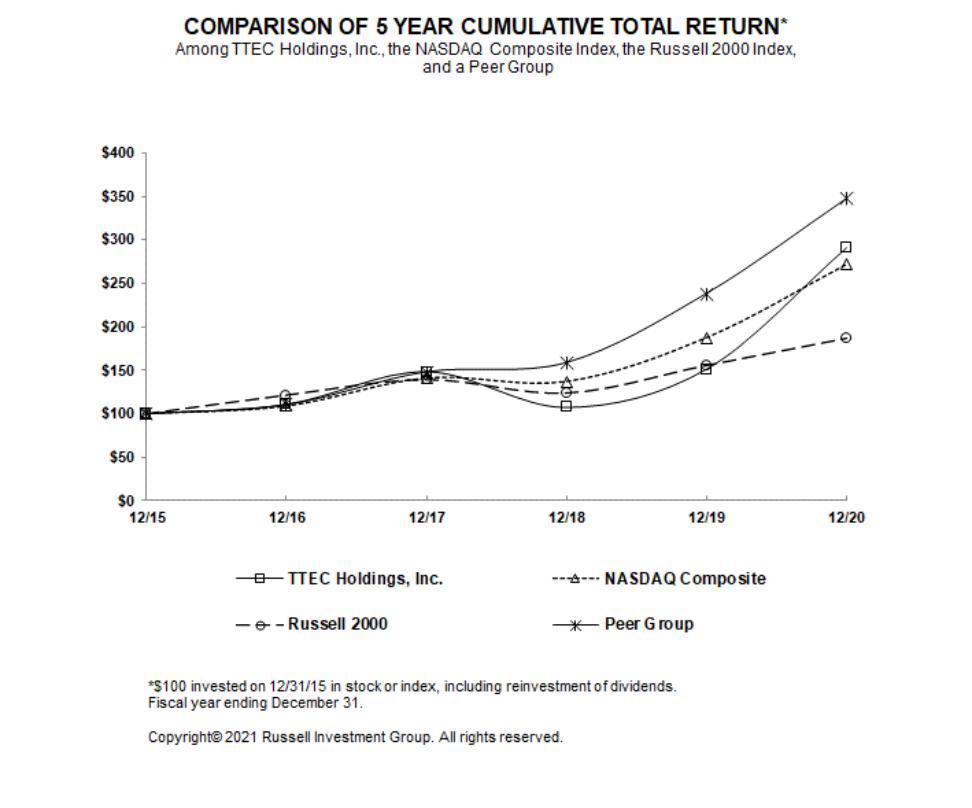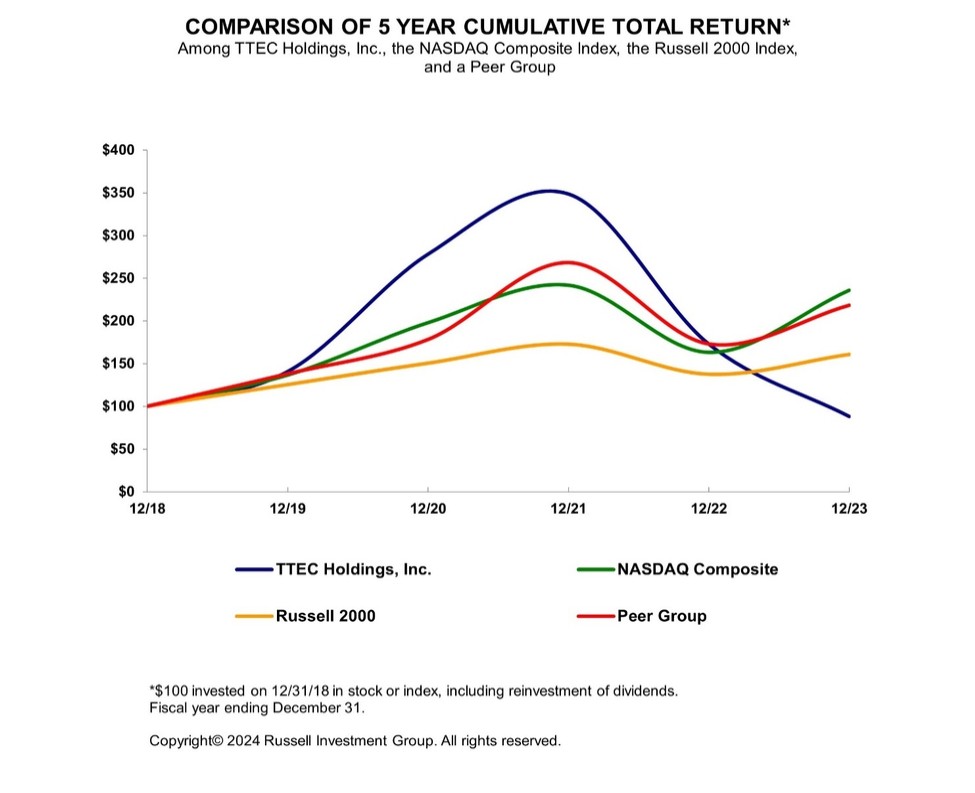We also invest to broaden our product and service capabilities, increase our global client base and industry expertise, tailor our geographic footprint to the needs of our clients, and further scale our end-to-end integrated solutions platform. To this end we have been highlywere acquisitive in the last several years, including our acquisition in April 2022 of certain public sector assets of Faneuil, Inc. that included healthcare exchange and transportation services contracts. We also completed an acquisition early in the second quarter of 2021 of a provider of Genesys and Microsoft cloud contact center services, which followed an acquisition in the second half of 2020 of a preferred Amazon Connect cloud contact center service provider, an acquisition in the first quarter of 2020 of an autonomous customer experience and intelligent automation solutions provider and an acquisition in the fourth quarter of 2019 of a provider of customer care, social media community management, content moderation, technical support and business process solutions for rapidly growing businesses in early stages of their lifecycle.implementation provider.
We have extensive expertise in the healthcare, automotive, communications, financial services, national/federal and state and local government, healthcare,financial services, communications, technology, travel and logistics, media and entertainment, e-tail/retail, technology, travel and transportation industries. We serve more than 300750 diverse clients globally, including many of the world’s iconic brands, Fortune 1000 companies, government agencies,public sector clients, and disruptive growthhypergrowth companies.
Our strong balance sheet, cash flow from operationsIndustry – Key Emerging Themes
The CX landscape is undergoing a dynamic transformation, fueled by technological advancements and accessevolving customer expectations.
AI-powered CX:As brands endeavor to debtintegrate artificial intelligence into customer experience, many stumble by failing to apply AI strategically for true personalization and capital markets have historically provided usinsightful automation.
Cloud Migration and Security Are Board Level Imperatives:In the financialarena of customer experience, the migration to cloud-based platforms is rapidly becoming a fulcrum for transformation, offering unprecedented scalability, flexibility, and cost efficiency.
Industry Consolidation Driven by a Highly Fragmented Market: The CX market is highly fragmented with no single provider dominating the market.
Enterprise-Level Vendor Consolidation: Multinational corporations are increasingly favoring a consolidation of vendors within the CX domain.
Cybersecurity as a Critical Differentiator: Clients expect their service providers to effectively fund our organic growth, capital expenditures, strategic acquisitions, incremental investments, and capital distributions.
We return capital to our shareholders through our dividend program. Given our cash flow generation and balance sheet strength, we believe cash dividends, in balance with ourmake investments in productsophisticated information security controls to protect CX operating environments where attempts at unauthorized access are common and where expansion of solutions that rely on staff who work remotely increases risks to the stability of service innovations, organic growth,delivery.
Impact Sourcing Boosts Communities and strategic acquisitions, align shareholder interests withFuels CX Diversity: The practice of Impact Sourcing, hiring and training talent in underserved communities, is swiftly gaining traction in the needsdomain of customer experience, particularly among discerning Fortune 1000 companies.
Evolving Customer Expectations and Delivery Models: In today's customer experience landscape, evolving customer expectations present a distinct market opportunity for brands that can adeptly navigate and capitalize on evolving customer demands.
Our Growth Strategy
As a leader and innovator in the Company. After consideration of TTEC’s performance, cash flow from operations, capital needs and the overall liquidity of the Company, the Company’s Board of Directors adopted a dividend policy in 2015, with the intent to distribute a periodic cash dividend to stockholders of our common stock. Since inception in 2015, the Company has continued to pay a semi-annual dividend in October and April of each year in gradually increasing amounts from $0.18 to $0.40 per common share. On December 3, 2020, the Board of Directors authorized a special one-time dividend of $2.14 per common share, payable on December 30, 2020, to shareholders of record as of December 18, 2020. On February 25, 2021, the Board of Directors authorized a semi-annual dividend of $0.43 per common share, payable on April 21, 2021 to shareholders of record as of April 5, 2021.
In March 2020, the World Health Organization declared the outbreak of COVID-19 as a global pandemic. Within weeks of this announcement, travel bans, a state of emergency, quarantines, lockdowns, “shelter in place” orders,customer experience technology services and business restrictionsprocess outsourcing (BPO) landscape, our strategy is directed towards sustainable growth in revenue and shutdowns were issuedprofitability. Our approach is to leverage our operational excellence in most countries where TTEC does business. The need to complycustomer engagement with these measures, which came into effect with little notice, impacted our day-to-day operationshigh-margin, technology-infused platforms and disrupted our business in the last month of the first quarter and second quarter of the year. As a result, operations were suspended in some of our TTEC Engage customer experience delivery sites. Business continuity plans were executed to transition as many employees as was reasonably possible to a work from home environment to support the health and well-being of our employees and communities and to provide a stable service delivery platform for our clients.managed services. Our strategic imperatives include:
Between mid-March and mid-April 2020, we transitioned over 43,000 employees, or 80% of our employee population, to a work from home environment. With the easing of some of the government restrictions, those employees who were considered essential and could not operate effectively while remote returned to our brick-and-mortar sites, but most continue to work from home.
For those sites that continue to operate, we have taken extensive measures to protect the health and safety of our employees, in accordance with the recommendations and guidelines provided by the World Health Organization, the U.S. and European Centers for Disease Control and Prevention, the U.S. Occupational Safety Association, and local governments in jurisdictions where our customer experience centers are located.
| • | Deepening Client Relationships |
| • | Targeting Industry Leaders as Clients |
| • | Enhancing Global Sales and Marketing Synergies |
| • | Geographic Market Expansion |
| • | Investment in Tech-Driven Innovation |
| • | Leveraging our Technology Partner Ecosystem |
| • | Delivering with Purpose through Impact Sourcing |

